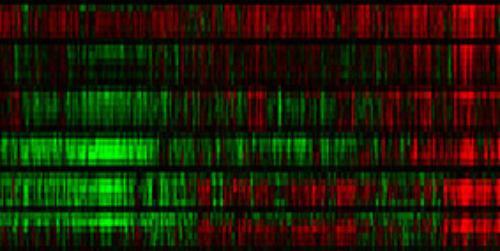SuSTaIn: statisticians set the research agenda
A £4.2m initiative to revitalise the discipline of mathematical statistics in the UK is underway at Bristol University mathematics department.
Headed by Professor Peter Green, Professor Guy Nason, Dr Christophe Andrieu and Dr Sean Collins, SuSTaIn will see the recruitment of a high-calibre team comprising a professor and four early- to mid-career researchers as lecturers. Bristol's statistics group also aims to attract a number of postdoctoral fellows of outstanding potential into a rolling programme where they will be free to develop the latest ideas in mathematical statistics.
Furthermore, the group will also establish a comprehensive 4-year MRes/PhD research training programme at Bristol, run an international conference and series of research "kitchens" and workshops and host distinguished international visitors.
A large proportion of the funding - £3.5m - comes as a Science and Innovation Award from the Engineering and Physical Sciences Research Council (EPSRC), the government's funding body for research in these areas.
The Science and Innovation Awards were introduced by EPSRC in 2005 to address the issue of giving support to strategic areas of research that are particularly at risk.
Statstics in Britain is seen by policy makers as extremely strong in scientific achievement but in danger demographically. As with other traditional core subjects, statistics is encountering declining numbers of entrants. The discipline is a victim of its own success: graduates leave academia to pursue lucrative careers in fields such as finance and genetic research. This in turn affects the base of academic staff in universities which impacts on the nation's capacity to produce the well-trained statisticians and research leaders of tomorrow.
SuSTaIn will create a new centre of research activity at Bristol encouraging and supporting innovative approaches to statistics research. A key criterion of SuSTaIn is to appoint talented researchers working at the highest level in rigorous mathematical statistics, but aimed towards future statistical methodology and applications, not those doing mathematics for its own sake.
"It's all about planning the future theoretical core of the subject," says Professor Green. "We can attract the best and liveliest people from around the world, without losing the strong empirical tradition of interacting closely with other subjects."
Consequently, a wealth of heuristics and ad hoc methods have been proposed in such areas with variable success and very limited proof of validity. In most cases these methods still lack a firm theoretical understanding. Part of the work of SuSTaIn will be to pick these ad hoc methods apart, examine them for mathematical rigour versus their computability and quantify the limits of their applicability.
Once the underlying mathematics of these tools is established, genuine discoveries can stimulate further methodological developments.
Furthermore, the emergence of new scientific areas, such as quantum physics and nano-mathematics, where statistical understanding is needed but the classical paradigms no longer hold, calls for the development of new theoretical tools. These are needed for both a quantitative description of observed phenomena and the development of adequate analytic tools.
SuSTaIn is already part way towards its goal of bringing the world's best minds to bear on these areas. "Our efforts in publicising this initiative have generated an enormous amount of interest and we've received very high-calibre applications for the posts," says Professor Green.
Sustaining the success
The goal of SuSTaIn (Statistics underpinning Science Technology and Industry) is to equip statistics for the challenges posed by 21st century science and technology.
Did you know?
Part of the work of SuSTaIn will be to pick apart ad hoc methods, examine them for mathematical rigour versus their computability and quantify the limits of their applicability.
 New applications of statistics
New applications of statistics
This image represents some effects of the extracellular environment on gene expression in yeast. Things like temperature, oxidation, nutrients, pH are varied widely, and expression levels measured at discrete stages. The color scale ranges from 64-fold repression (green) to 64-fold activation (red). The statistical challenge is to extract signal from the very considerable noise in the data, to uncover patterns of co-regulation among genes, and ultimately to map out gene regulatory networks.